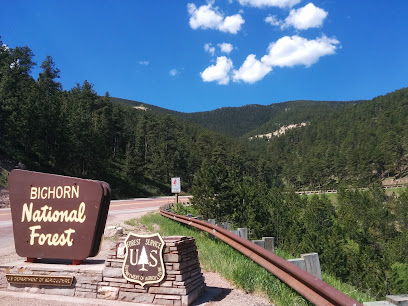
Bighorn National Forest: A Wyoming Wilderness Wonderland
Discover the natural splendor of Bighorn National Forest in Wyoming, a haven for outdoor enthusiasts with its stunning landscapes, abundant wildlife, and rich cultural heritage.
Bighorn National Forest, located in northern Wyoming, is a hidden gem for nature enthusiasts. Spanning over 1.1 million acres, this forest offers a diverse range of landscapes, from lush meadows and dense woodlands to striking rock formations and pristine lakes. Established in 1897, it is one of the oldest national forests in the United States and is named after the Bighorn River and the majestic Bighorn Mountains. The forest is a paradise for outdoor activities. Hiking and camping are popular pursuits, with over 1,500 miles of trails and numerous campgrounds to choose from. The Cloud Peak Wilderness, within the forest, features Cloud Peak, the highest point in the Bighorn Mountain Range, which offers breathtaking views and challenging climbs for avid hikers. In the winter, the forest transforms into a snowy playground, ideal for snowmobiling, cross-country skiing, and snowshoeing. Wildlife is abundant in Bighorn National Forest. Visitors may encounter elk, mule deer, moose, and the forest's namesake, the bighorn sheep. Birdwatchers will be delighted with the variety of species, including eagles, hawks, and songbirds. Anglers can enjoy fishing in the many streams and lakes, which are home to trout and other fish species. Bighorn National Forest also boasts several scenic byways, such as the Bighorn Scenic Byway and the Medicine Wheel Passage, offering stunning vistas and opportunities to explore historical and cultural sites. The Medicine Wheel, a significant Native American sacred site, is a must-see and provides a glimpse into the region's rich cultural heritage.
Local tips in Bighorn National Forest
- Check weather conditions before your trip, as the weather can change rapidly in the mountains.
- Visit during the fall for spectacular foliage and fewer crowds.
- Carry bear spray and know how to use it if you plan to hike in remote areas.
- Be prepared for high altitudes; drink plenty of water and take it slow.
- Stop by the Bighorn National Forest Visitor Center for maps, permits, and local advice.
Bighorn National Forest: A Wyoming Wilderness Wonderland
Bighorn National Forest, located in northern Wyoming, is a hidden gem for nature enthusiasts. Spanning over 1.1 million acres, this forest offers a diverse range of landscapes, from lush meadows and dense woodlands to striking rock formations and pristine lakes. Established in 1897, it is one of the oldest national forests in the United States and is named after the Bighorn River and the majestic Bighorn Mountains. The forest is a paradise for outdoor activities. Hiking and camping are popular pursuits, with over 1,500 miles of trails and numerous campgrounds to choose from. The Cloud Peak Wilderness, within the forest, features Cloud Peak, the highest point in the Bighorn Mountain Range, which offers breathtaking views and challenging climbs for avid hikers. In the winter, the forest transforms into a snowy playground, ideal for snowmobiling, cross-country skiing, and snowshoeing. Wildlife is abundant in Bighorn National Forest. Visitors may encounter elk, mule deer, moose, and the forest's namesake, the bighorn sheep. Birdwatchers will be delighted with the variety of species, including eagles, hawks, and songbirds. Anglers can enjoy fishing in the many streams and lakes, which are home to trout and other fish species. Bighorn National Forest also boasts several scenic byways, such as the Bighorn Scenic Byway and the Medicine Wheel Passage, offering stunning vistas and opportunities to explore historical and cultural sites. The Medicine Wheel, a significant Native American sacred site, is a must-see and provides a glimpse into the region's rich cultural heritage.
When is the best time to go to Bighorn National Forest?
Iconic landmarks you can’t miss
Devils Tower National Monument
Explore the breathtaking beauty and cultural heritage of Devils Tower National Monument, a unique geological wonder and sacred site in Wyoming.
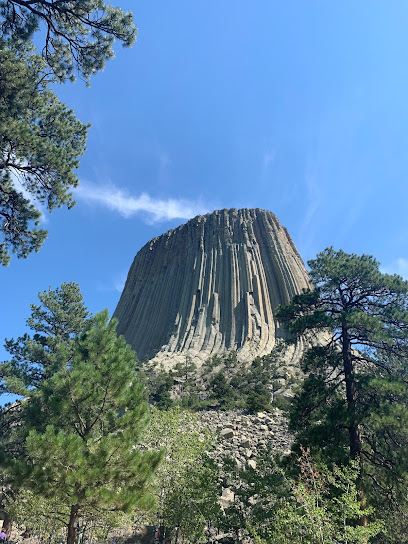
Little Bighorn Battlefield National Monument
Visit Little Bighorn Battlefield National Monument to experience a profound piece of American history surrounded by Montana's stunning landscapes.
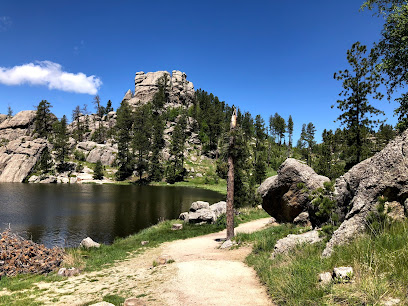
Bighorn Canyon National Recreation Area
Explore the stunning landscapes and rich wildlife of Bighorn Canyon National Recreation Area, a must-visit destination for outdoor enthusiasts in Montana.
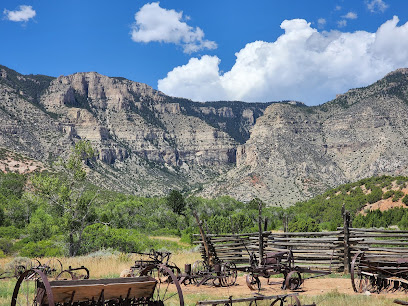
Tongue Ranger District and Forest Supervisor's Office
Discover the stunning landscapes and outdoor adventures at Tongue Ranger District, a gateway to Wyoming's Bighorn National Forest.
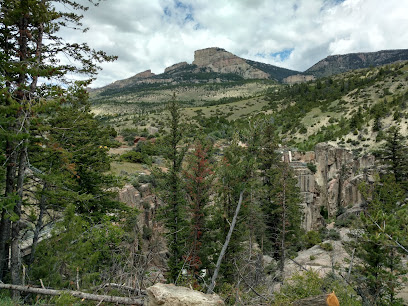
Independence Rock State Historic Site
Explore the historic Independence Rock State Historic Site, where pioneers left their mark and breathtaking landscapes await your discovery.
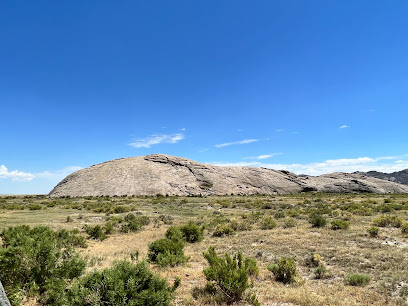
Bighorn Medicine Wheel
Discover the Bighorn Medicine Wheel, a sacred cultural landmark in Wyoming, where spirituality meets stunning mountain landscapes.
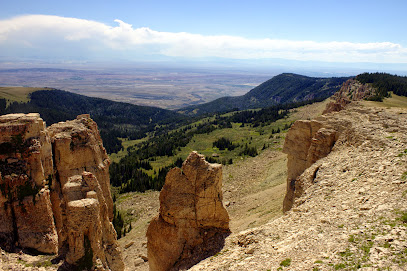
Shell Falls Interpretive Site
Explore the stunning Shell Falls Interpretive Site in the Bighorn Mountains, where breathtaking views and nature education come together in perfect harmony.
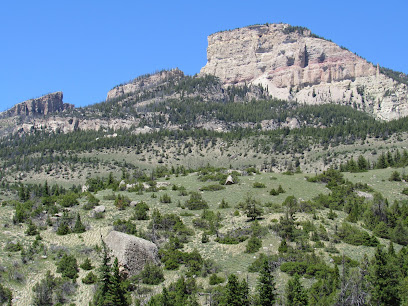
Bighorn Canyon National Recreation Area - Cal Taggart Visitor Center
Discover the breathtaking beauty and diverse wildlife of Bighorn Canyon National Recreation Area, the perfect destination for nature lovers and outdoor adventurers.
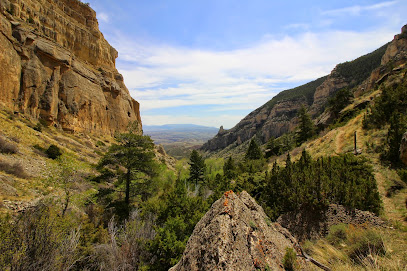
Shell Falls
Experience the breathtaking beauty of Shell Falls in Wyoming, a stunning waterfall nestled in the heart of Bighorn National Forest, perfect for nature lovers.
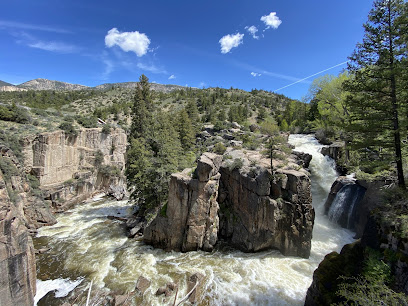
Museum at the Bighorns
Explore the rich cultural heritage of Wyoming at the Museum at the Bighorns, where history comes alive through captivating exhibits and local artifacts.
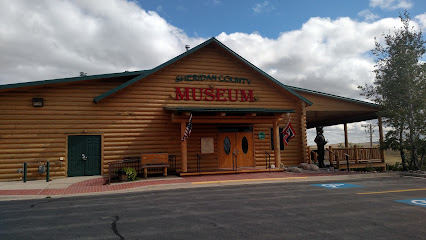
Big Horn National Forest Visitor's Center
Discover the Big Horn National Forest Visitor's Center, your gateway to adventure in Wyoming's breathtaking landscapes, wildlife, and outdoor activities.
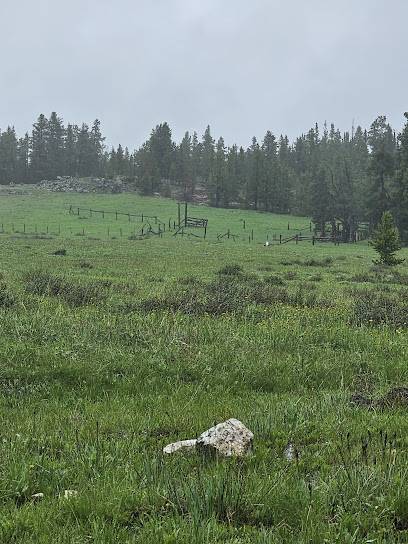
Porcupine Falls Trailhead
Discover the enchanting beauty of Porcupine Falls Trailhead in Wyoming's Bighorn Mountains, a premier hiking destination for nature enthusiasts.
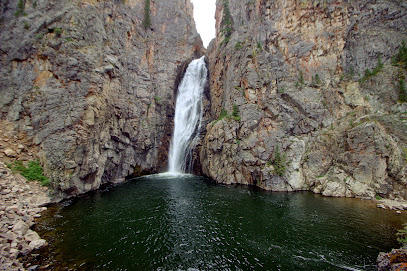
Bucking Mule Falls Trailhead
Experience the breathtaking beauty of Bucking Mule Falls Trailhead in Wyoming, where adventure and tranquility await every nature lover.
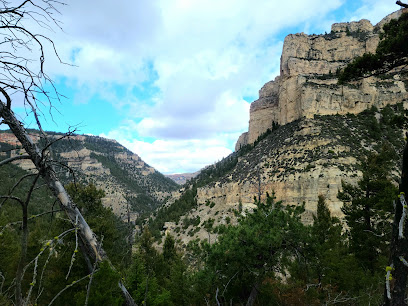
Big Horn National Forest
Discover the stunning beauty and adventures that await you in Big Horn National Forest, a true gem of Wyoming's natural landscapes.
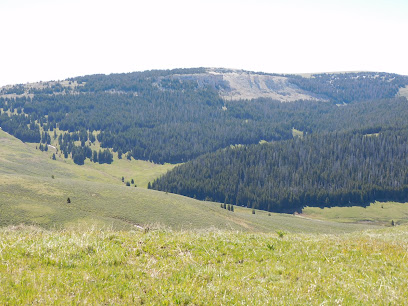
Battle Park Trailhead
Explore breathtaking views and serene trails at Battle Park Trailhead in Ten Sleep, Wyoming - a perfect destination for hiking and nature lovers.
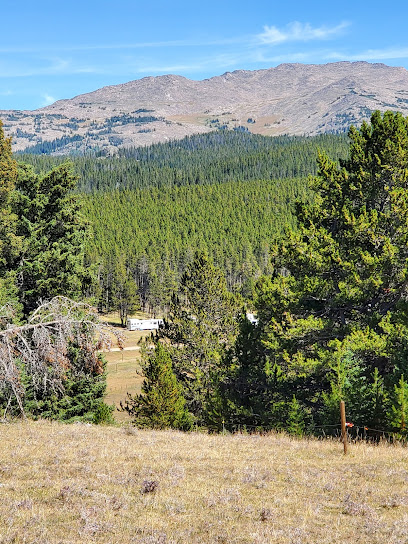
Unmissable attractions to see
Bighorn Canyon National Recreation Area
Discover the majestic beauty and rich history of Bighorn Canyon National Recreation Area, a true gem for outdoor enthusiasts and nature lovers alike.
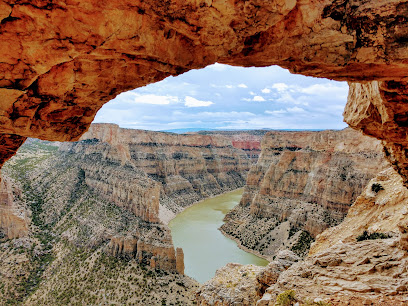
Bighorn Medicine Wheel
Discover the spiritual essence of the Bighorn Medicine Wheel, a cultural landmark in Wyoming revealing ancient traditions and breathtaking mountain vistas.
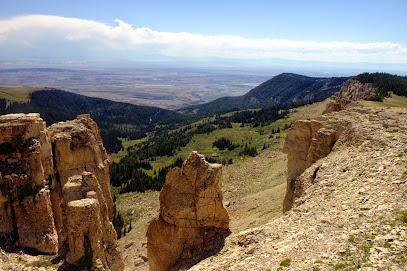
Shell Falls Interpretive Site
Explore the natural beauty and educational wonders of Shell Falls Interpretive Site in the heart of Wyoming's Big Horn National Forest.
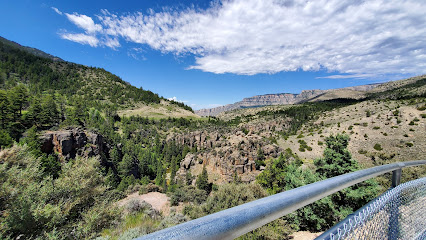
Sheep Mountain Lookout
Experience the stunning vistas and serene ambiance of Sheep Mountain Lookout in Wyoming's Bighorn National Forest.

Big Horn National Forest Visitor's Center
Discover the gateway to adventure at Big Horn National Forest Visitor's Center, where nature meets knowledge in Wyoming's stunning landscapes.
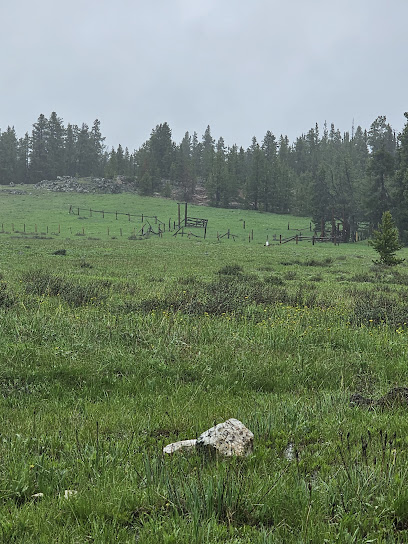
Park Reservoir
Experience the serene beauty of Park Reservoir in Wyoming, a perfect destination for outdoor adventures and peaceful retreats amidst nature.
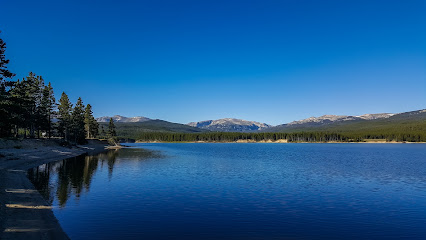
Big Horn National Forest
Explore the stunning landscapes, diverse wildlife, and endless adventures at Big Horn National Forest, Wyoming's natural gem.
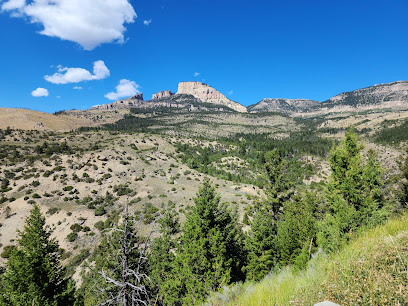
Bighorn National Forest - Medicine Wheel Ranger District
Discover the breathtaking landscapes and rich heritage at Bighorn National Forest's Medicine Wheel Ranger District, a paradise for nature lovers and adventure seekers.
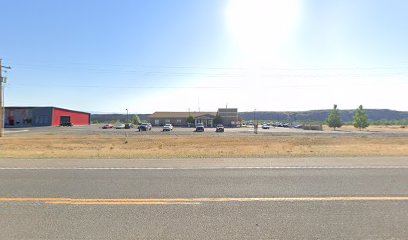
Bighorn National Recreation Area
Discover the breathtaking beauty and outdoor adventures of Bighorn National Recreation Area in Wyoming, a true gem for nature lovers and adventurers alike.

Big Horn Mountains Scenic Byway
Explore the breathtaking beauty of the Big Horn Mountains Scenic Byway, a stunning journey through nature's wonders in Wyoming.
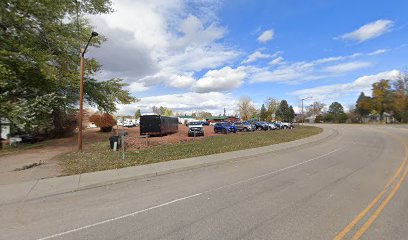
Essential places to dine
FireRock Steakhouse
Experience mouthwatering steaks at FireRock Steakhouse in Casper - where quality meets warmth in every bite.

Johnny J's Diner
Experience the charm of Johnny J's Diner in Casper—where hearty breakfasts meet warm hospitality.
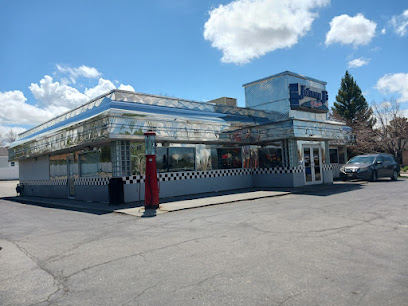
Gun Barrel Steak and Game House
Experience exquisite steak and game dishes at Gun Barrel Steak and Game House in Jackson, WY - where fine dining meets Western hospitality.
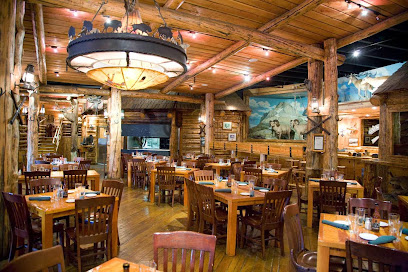
Luxury Diner
Experience hearty American breakfasts at Luxury Diner in Cheyenne - a must-visit culinary gem for all food lovers.
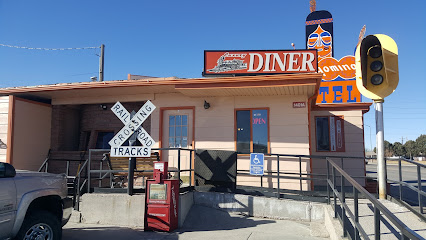
HQ Southern BBQ
Discover authentic Southern barbecue at HQ Southern BBQ in Evansville - where delicious meets delightful!
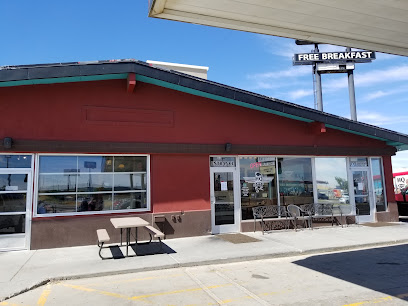
Cowboy Cafe
Experience authentic Wyoming dining at Cowboy Cafe in Sheridan – where hearty meals meet Western hospitality.
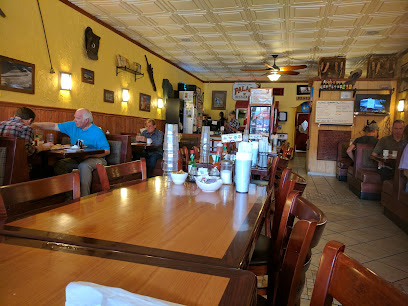
Gather in Jackson Hole for Food & Drink
Experience the best of American cuisine at Gather in Jackson Hole – where delicious small plates meet refreshing cocktails.
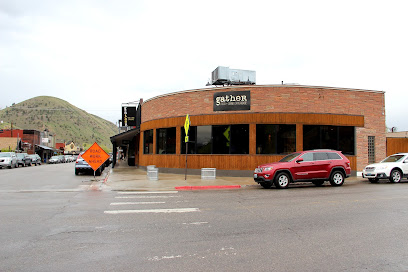
Bin22
Experience exquisite tapas and curated wines at Bin22 in Jackson Hole - where every meal becomes an unforgettable culinary journey.

Dash Inn
Discover the taste of comfort at Dash Inn in Buffalo, WY - where fast food meets friendly service and local charm.
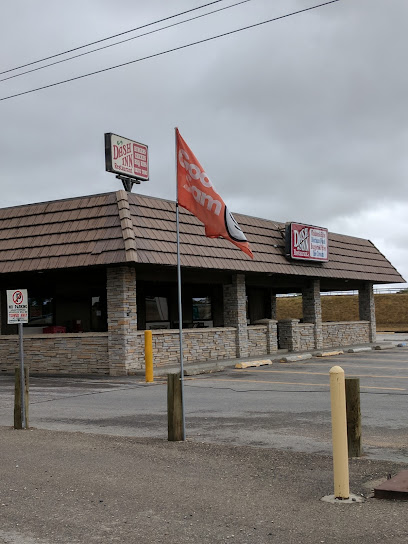
Buffalo Jump Steakhouse
Experience authentic Western cuisine at Buffalo Jump Steakhouse – where every bite tells a story.

Wyoming's Rib & Chop House
Discover Wyoming's Rib & Chop House: A premier steakhouse in Casper offering top-notch meats and a welcoming atmosphere.
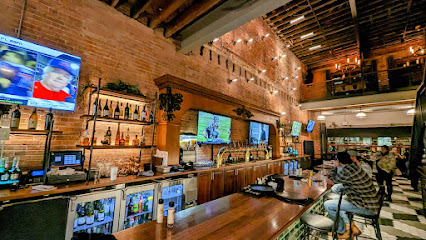
Snake River Grill
Discover culinary excellence at Snake River Grill in Jackson, WY – where American cuisine meets fine dining in an enchanting atmosphere.
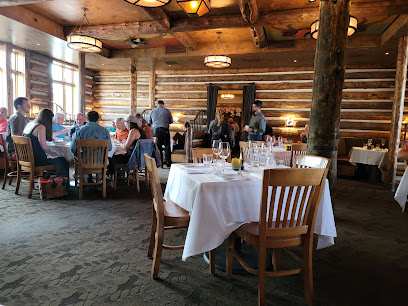
Cavalryman Steakhouse
Experience authentic Wyoming flavors at Cavalryman Steakhouse in Laramie - where delicious steaks meet warm hospitality.
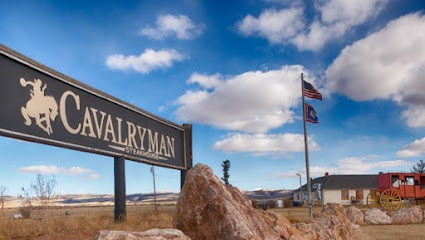
Ranchito Café
Discover authentic Mexican flavors at Ranchito Café in Worland, WY - where every taco tells a story.
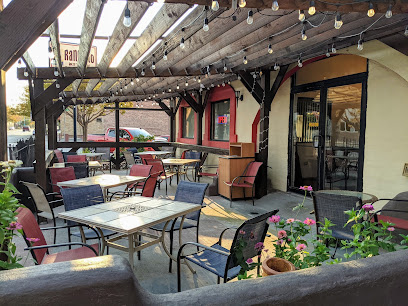
Little Bear Inn
Discover Little Bear Inn in Cheyenne: where hand-cut steaks meet warm hospitality in a cozy atmosphere.
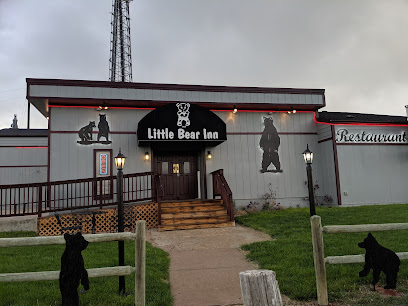
Markets, malls and hidden boutiques
Tongue Ranger District and Forest Supervisor's Office
Discover the natural beauty of Wyoming at the Tongue Ranger District, your gateway to the Bighorn National Forest.
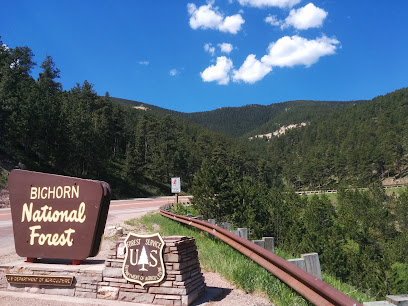
Bighorn Medicine Wheel
Discover the enchanting Bighorn Medicine Wheel in Wyoming, a sacred site that beautifully blends Native American heritage with stunning mountain landscapes.

Fly Shop of the Bighorns
Discover the best fly fishing gear and expert advice at the Fly Shop of the Bighorns in Sheridan, Wyoming, your gateway to the Bighorn River.
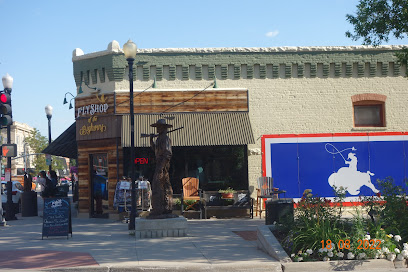
Big Horn National Forest Visitor's Center
Discover the gateway to adventure at Big Horn National Forest Visitor's Center, where nature and exploration await in Wyoming's stunning landscapes.
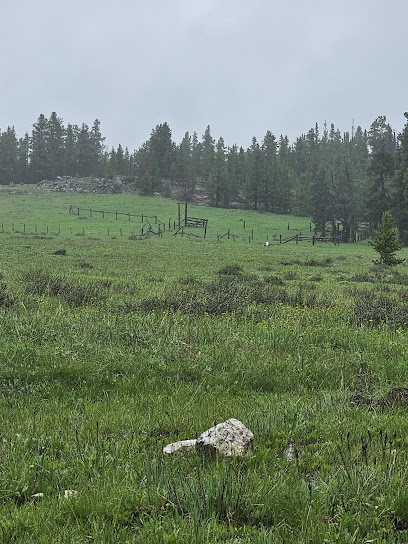
Big Horn Antiques and Gifts
Uncover unique antiques and collectibles at Big Horn Antiques and Gifts in Greybull, Wyoming, where every corner reveals a piece of history.
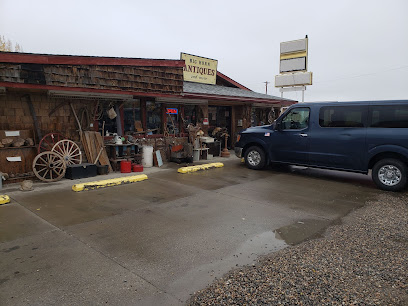
Big Horn Trading LLC
Explore Big Horn Trading LLC in Sheridan, WY for unique finds, from tools to collectibles, in a welcoming atmosphere that celebrates local culture.

U.S. Forest Service, Bighorn National Forest
Explore the majestic Bighorn National Forest, a natural paradise in Wyoming filled with breathtaking landscapes and outdoor adventures.
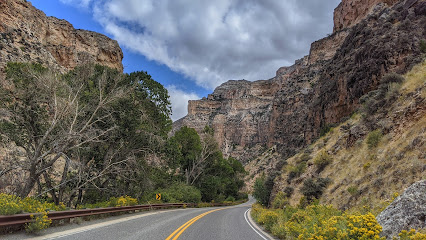
Bighorn National Forest
Explore the breathtaking landscapes and diverse wildlife of Bighorn National Forest in Wyoming, a paradise for outdoor enthusiasts and nature lovers.

Local Phrases about Bighorn National Forest
-
- HelloHowdy
[hah-dee] - GoodbyeSee ya
[see yah] - YesYup
[yuhp] - NoNope
[nohp] - Please/You're welcomePlease/No worries
[pleez/noh wur-eez] - Thank youThanks
[thanks] - Excuse me/SorryPardon me/My bad
[par-dun mee/my bad] - How are you?Howdy partner, how's it goin'?
[hah-dee pahrt-nur, howz it go-in] - Fine. And you?Just dandy. How 'bout you?
[just dan-dee. how bout yuh] - Do you speak English?Ya speak English?
[yah speak ing-glish] - I don't understandI ain't gettin' ya
[I aint get-tin yah]
- HelloHowdy
-
- I'd like to see the menu, pleaseLemme take a gander at the menu, if ya don't mind
[lem-me take uh gan-der at the men-yoo, if yah dont mind] - I don't eat meatI ain't into meat
[I aint in-toh meet] - Cheers!Bottoms up!
[bot-ums up] - I would like to pay, pleaseMind if I settle up?
[mind if I set-tul up]
- I'd like to see the menu, pleaseLemme take a gander at the menu, if ya don't mind
-
- Help!Send help!
[send help] - Go away!Git outta here!
[git out-tuh here] - Call the Police!Get the law on the line!
[get the law on the line] - Call a doctor!Fetch a doc!
[fetch uh doc] - I'm lostI'm turned around
[I'm turned around] - I'm illI'm feelin' poorly
[I'm feel-in poor-lee]
- Help!Send help!
-
- I'd like to buy...I reckon I'll take...
[I rek-in I'll take] - I'm just lookingJust browsin'
[just brow-sin] - How much is it?What's the damage?
[whats the dam-ij] - That's too expensiveThat's a bit steep
[thats uh bit steep] - Can you lower the price?Can ya knock some off the price?
[can yah knock sum off the price]
- I'd like to buy...I reckon I'll take...
-
- What time is it?What's the hour?
[whats the our] - It's one o'clockIt's one on the dot
[its one on the dot] - Half past (10)Ten-thirty
[ten-thur-tee] - MorningMornin'
[morn-in] - AfternoonAfternoon
[after-noon] - EveningEvenin'
[even-in] - YesterdayYest'day
[yes-t-day] - TodayToday
[to-day] - TomorrowMorrow
[mor-row] - 1One
[wun] - 2Two
[too] - 3Three
[three] - 4Four
[for] - 5Five
[fiv] - 6Six
[siks] - 7Seven
[sev-in] - 8Eight
[ate] - 9Nine
[nine] - 10Ten
[ten]
- What time is it?What's the hour?
-
- Where's a/the...?Where's the...?
[wheres the] - What's the address?What's the addy?
[whats the add-ee] - Can you show me (on the map)?Can ya show me (on the map)?
[can yah show me (on the map)] - When's the next (bus)?When's the next (bus)?
[whens the next (bus)] - A ticket (to ....)A ticket (to ....)
[uh ticket (to)]
- Where's a/the...?Where's the...?
History of Bighorn National Forest
-
Long before European settlers arrived, the Bighorn National Forest area was home to various Native American tribes, including the Crow, Lakota Sioux, and Shoshone. These tribes utilized the forest for hunting, fishing, and gathering medicinal plants. The Medicine Wheel, a significant archaeological site within the forest, is a testament to their spiritual and cultural practices. This ancient stone structure, built by the Plains Indians, is believed to have been used for astronomical, ceremonial, and healing purposes.
-
In the early 1800s, European trappers and traders began to explore the Bighorn region. John Colter, a member of the Lewis and Clark Expedition, is often credited as one of the first white men to enter the area. The mountain men who followed in his footsteps left behind trails and stories that would later attract settlers and miners to the region.
-
The passage of the Homestead Act in 1862 led to an influx of settlers in the Bighorn area. Families traveled west to claim land and build new lives. However, the rugged terrain and harsh winters made homesteading a challenging endeavor. Despite these difficulties, small communities began to form, and the forest's abundant resources provided sustenance and economic opportunities.
-
The Bozeman Trail, established in the 1860s, was a significant route for settlers traveling to the gold fields of Montana. Passing through the Bighorn region, this trail became a point of contention between the U.S. government and Native American tribes, leading to several conflicts. The Fetterman Massacre of 1866, where a group of soldiers was ambushed by the Lakota Sioux, is one of the most notable events associated with the trail.
-
Bighorn National Forest was officially established in 1897, making it one of the oldest national forests in the United States. The Forest Reserve Act of 1891 allowed President Benjamin Harrison to set aside forested lands for preservation and public use. The establishment of the forest aimed to protect the area's natural resources, including its diverse wildlife, water sources, and timber.
-
In the late 19th and early 20th centuries, the Bighorn region was the site of the 'Sheep Wars,' a series of violent conflicts between cattle ranchers and sheep herders. Competition for grazing land led to clashes that sometimes turned deadly. These disputes reflect the broader tensions of the American West as different groups vied for control over the land's resources.
-
Throughout the 20th and 21st centuries, Bighorn National Forest has seen various conservation initiatives aimed at preserving its unique ecosystems. Efforts have included reforestation projects, wildlife habitat restoration, and measures to combat invasive species. The forest is now a popular destination for outdoor recreation, attracting hikers, campers, and nature enthusiasts from around the world.
Bighorn National Forest Essentials
-
Bighorn National Forest is located in north-central Wyoming. The closest major airports are Billings Logan International Airport in Montana, about 100 miles to the northwest, and Casper/Natrona County International Airport in Wyoming, about 150 miles to the south. From these airports, you can rent a car and drive to the forest. The most common access points are via U.S. Routes 14, 14A, and 16.
-
A car is essential for exploring Bighorn National Forest, as public transportation options are limited. Rental cars are available at nearby airports. Within the forest, be prepared for a mix of paved and unpaved roads. During the winter months, certain roads may be closed due to snow. Always check the current road conditions before traveling.
-
The official currency is the United States Dollar (USD). Credit and debit cards are widely accepted in nearby towns, but it's advisable to carry cash when venturing into the forest, as some remote areas and smaller establishments may not accept cards. ATMs are available in towns like Buffalo, Greybull, and Sheridan.
-
Bighorn National Forest is generally safe, but it's crucial to take standard precautions. Wildlife encounters are possible, so always keep a safe distance from animals. The forest is vast, and cell service can be spotty, so carry a map and a GPS device. There are no high-crime areas targeting tourists, but always remain vigilant and secure your belongings.
-
In case of emergency, dial 911 for assistance. For non-urgent matters, local ranger stations can provide help. It's advisable to have travel insurance that covers medical emergencies. The nearest hospitals are located in Sheridan and Cody. Always inform someone about your travel plans before heading into remote areas of the forest.
-
Fashion: Do wear layered clothing and sturdy hiking boots, as weather can change quickly. Don't wear open-toed shoes or sandals. Religion: There are no significant religious customs to be aware of, but do respect local cultural sites. Public Transport: There is limited public transportation; do plan to drive. Greetings: A friendly wave or a simple 'hello' is customary. Eating & Drinking: Do carry sufficient water and snacks, especially for long hikes. Don't leave food unattended, as it can attract wildlife.
-
To experience Bighorn National Forest like a local, visit during the off-season when the forest is less crowded. Engage with local rangers and residents for insights on hidden gems. Don't miss the Medicine Wheel, an ancient Native American site. For a unique experience, try fly-fishing in the forest's streams or camping under the stars for an unparalleled stargazing experience.
Trending Landmarks in Bighorn National Forest
-
Devils Tower National Monument
-
Little Bighorn Battlefield National Monument
-
Bighorn Canyon National Recreation Area
-
Tongue Ranger District and Forest Supervisor's Office
-
Independence Rock State Historic Site
-
Bighorn Medicine Wheel
-
Shell Falls Interpretive Site
-
Bighorn Canyon National Recreation Area - Cal Taggart Visitor Center
-
Shell Falls
-
Museum at the Bighorns
-
Big Horn National Forest Visitor's Center
-
Porcupine Falls Trailhead
-
Bucking Mule Falls Trailhead
-
Big Horn National Forest
-
Battle Park Trailhead
Nearby Cities to Bighorn National Forest
-
Things To Do in Cody
-
Things To Do in Gillette
-
Things To Do in Billings
-
Things To Do in Riverton
-
Things To Do in Yellowstone National Park
-
Things To Do in Deadwood
-
Things To Do in Jackson
-
Things To Do in Custer
-
Things To Do in Bozeman
-
Things To Do in Mount Rushmore
-
Things To Do in Big Sky
-
Things To Do in Lewistown
-
Things To Do in Rapid City
-
Things To Do in Rock Springs
-
Things To Do in Rexburg








